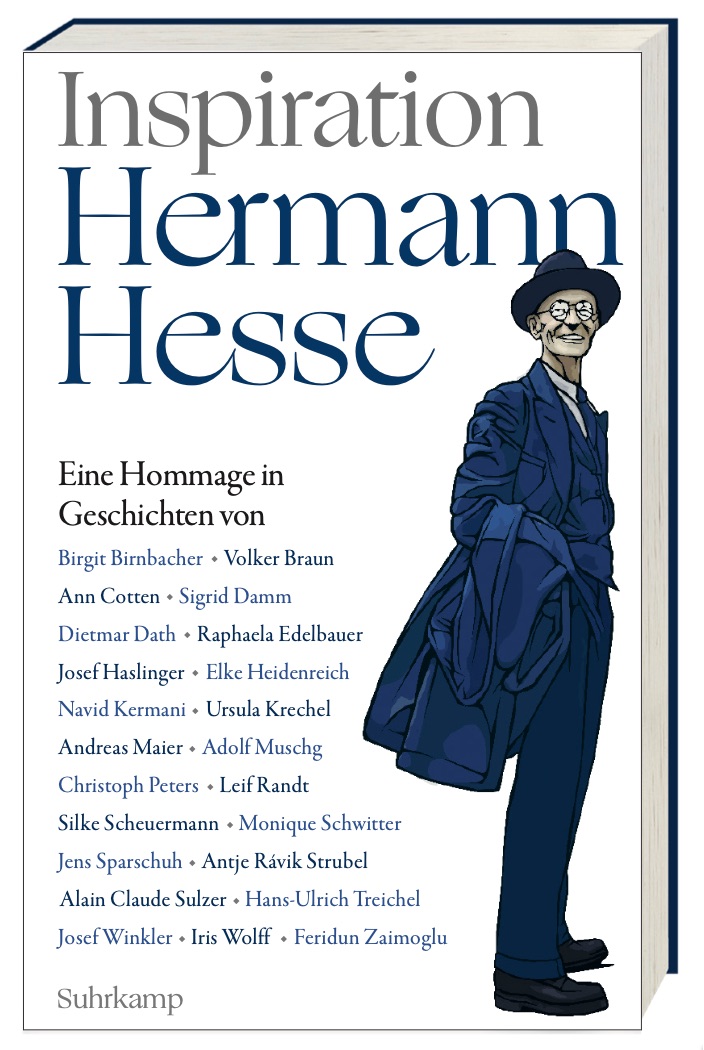
On the occasion of Hermann Hesse’s 145th birthday: book review “Inspiration Hermann Hesse”
Dieser Beitrag ist auch verfügbar auf:
![]() Deutsch (German)
Deutsch (German)
Many of us can probably remember some of the books we read in our childhood. We may have even read them over and over again, sometimes in their entirety from beginning to end, and sometimes only those passages that over time became our favorites. Then, as we became older and began reading more sophisticated texts, we stopped reading those books from our childhood, but we never forgot them.
That cycle repeated itself when we moved on to more sophisticated texts. We read some of them again and again, we may have marked up or copied some of our favorite passages, and we looked for more novels from those writers who became our favorites.
Hermann Hesse is for many readers one of those early favorites. I remember when a university German professor assigned us Hesse’s Steppenwolf. After we had finished our treatment of the novel and moved on to other novelists, I devoted much time in subsequent months and years to finding and reading Hesse’s other novels, his short stories, his poetry, and his letters, reviews, and other texts. Although my interests have since moved on to other writers and I rarely reach for something from Hesse, his writings accompany me still, and I’ve never really “left” his literary landscape.
Anthology of Hesse-inspired and Hesse-related texts
Hesse’s publisher in Germany, Suhrkamp, has now released an anthology of Hesse-inspired and Hesse-related texts from many contemporary German-language writers. The anthology is edited by Helga Esselborn-Krumbiegel, who teaches at the university in Cologne and has previously produced other publications on Hesse (see also Helga’s contributions on hhesse.de). In her introduction to the anthology, Esselborn-Krumbiegel describes a sequence of references to Hesse she encounters in a single day, which leads her to actively search for other references to Hesse, whereupon she discovers that Hesse is as relevant and omnipresent as ever. She cites numerous examples of Hesse’s presence, such as T.C. Boyle’s mention in his Drop City (2003) of Hesse’s Steppenwolf, and Maren Bohm’s recent novel “Hermann Hesses wundersame Geschichte“, in which Bohm extends Hesse’s Narcissus and Goldmund.
What follows Esselborn-Krumbiegel’s introduction is an extensive collection of both fictional and non-fiction texts that are all inspired by their respective authors’ exposure to Hesse. These texts include an autobiographical essay from German author Andreas Maier, which contains an explicit reference to a phrase in Hesse’s Steppenwolf, and stories by such writers as Dietmar Dath, Monique Schwitter, and Raphaela Edelbauer, all of which reflect Hesse’s influences on today’s writers.
Among the installments in the book I most enjoyed reading was the last one, written by Sigrid Damm, who is perhaps most famous for her monographs on historical German literary figures. In her essay, Damm reflects on some of the stages in Hesse’s life and on some of the most important personages in Hesse’s life, such as his publishers Siegfried Unseld and Peter Suhrkamp and his patron H. C. Böhmer. Damm recounts how a stipend in 2003 led her to gradually become more involved in Hesse’s life and work. Damm concludes her essay with an excerpt from Hesse’s poem Regen im Herbst, which she identifies as encouragement to “go forth, to productivity, to the preservation in word, in pictures”.
“Inspiration Hermann Hesse” is published by Suhrkamp-Verlag and costs 20€ in paperback.
